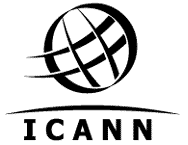|
Completion of "A Unique, Authoritative Root for the DNS" (ICP-3)
Before the ICANN meetings in Stockholm, I posted a draft discussion document entitled "A Unique, Authoritative Root for the DNS". This draft reviewed the technical and policy background to ICANN's commitment to a single, authoritative root. It was posted for comment. It was also the subject of illuminating back-and-forth discussions at the Public Forum and at the ICANN Board meeting in Stockholm. I have received many comments on this draft, both favorable and unfavorable. I appreciate all those who took the time to express their views. These views were candidly expressed in the best ICANN tradition. Based on those comments, I have finalized the document. This final version has been posted as the third member (ICP-3) of the Internet Coordination Policy series. Many members of the community informed me that they felt the document is fundamentally correct and applauded it as a faithful and well-documented statement of the long-standing policies underlying the principle of a single, authoritative root capable of preserving a robust, unique naming system for Internet users worldwide. Many also provided me with constructive suggestions for improvement. Helpful suggestions also came from some of those who were critical of the document. Some of the latter raised the objection that the document is creating new policy without going through proper process. As the discussion draft pointed out, however, it did not create new policy, but was carefully limited to articulating existing policy. The creation of new policies implicates ICANN's community-based consensus-development processes, but until those processes achieve new policies the pre-existing policies (whether developed through previous ICANN processes or received by ICANN at its creation) should be evenhandedly followed. In evaluating the document, the essential focus should be on what policies ICANN has developed or received, rather than what policies one wishes were in place. This essential enquiry depends heavily on documentation of past statements and actions; for this reason the discussion draft undertook a careful review of these and, in the final version, I have added some additional citations that were suggested in the ensuing discussion. Although some of the critical comments had very thoughtful statements about what policy should be, they lacked specific documentation that the established policy differs from that stated in the discussion draft. Many of the comments critical of the draft document can be found by following some of the related threads in the DNSO-GA list and the DNSO-Competitive Roots list. See also some of the threads in the web-based public comment forum associated with the draft paper. Several other subtexts emerged in the course of the dialog. At the Stockholm meeting, one company that began promoting its alternate-root activities earlier this year, New.net, circulated what it labeled as a "policy document" articulating its position, including the self-serving view that universal resolvability is not required to preserve DNS stability. The president of New.net sought my reaction to that paper. I have posted both of his notes to me, New.net's statement of its position, and a response to that document that the ICANN staff has prepared at my request. I am sure there will be agreement and disagreement with both documents. I can only tell you that I find the basic New.net premise regarding stability not only to be a poorly argued and technically unsupported premise, but one which consumers, businesses, researchers, and others would find harmful and confusing if put into large-scale practice. The draft document contained some initial information about another alternate root TLD provider — in particular the timing of their registrations in relation to the ICANN Board's decisions. I have removed this from the final document because the specifics of particular recent alternate-root efforts, while informative, tend to divert the appropriate focus of the document. A more thorough "Analysis of Registrations in the ARNI .BIZ Top-Level Domain" is available elsewhere on the Internet. See also "Analysis of Registrations in the Image Online Design .WEB Top-Level Domain." I have also posted a link to last fall's statement of the Global Internet Project, which is representative of the views of leading telecommunications, software, financial services, and content companies. I thank everyone for their contributions to this discussion. There will be those who continue to disagree strongly with the policy documented in the paper and those who feel equally passionate in their support. That is inevitable in communities as diverse as those associated with the the global Internet, and it is the fundamental role of ICANN to provide a forum where these disagreements may be resolved through development of new policies. To those who may still disagree with the final outcome, I can only tell you that I am sure we will find many areas on which to agree in the future.
M. Stuart
Lynn Note: A background non-technical document on the single, authentic root and the subject of universal resolvability can be found on the InterNIC web site. Comments concerning the layout, construction and functionality of this site should be sent to webmaster@icann.org.
(c) 2001 The Internet Corporation for Assigned Names and Numbers. All rights reserved. |
